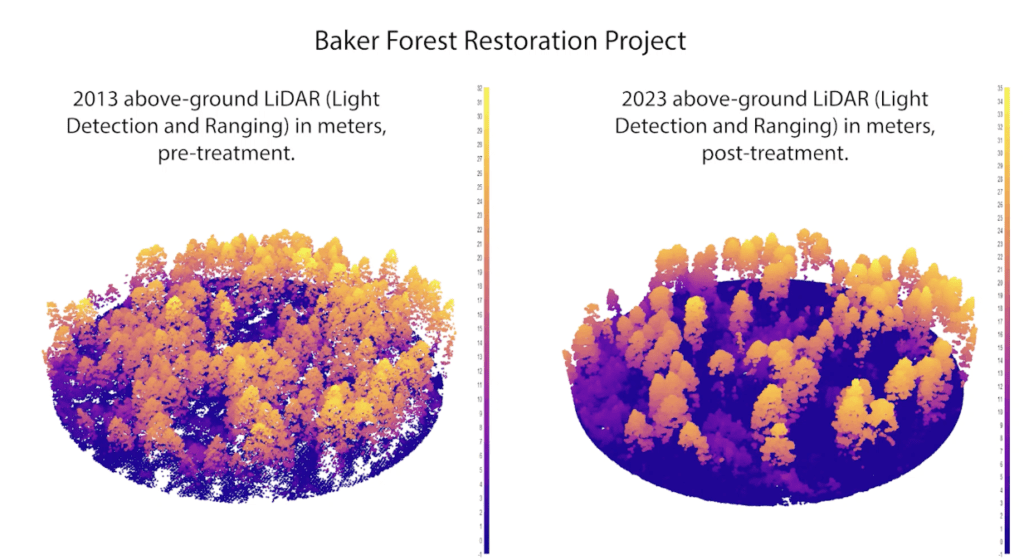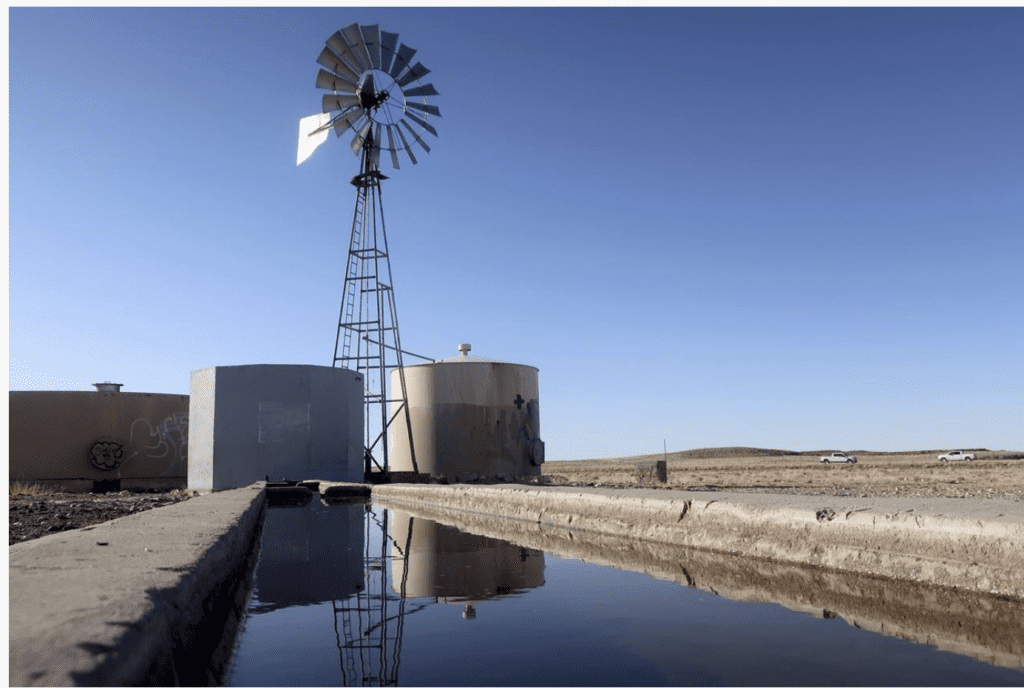Daniel Salzler No. 1256 EnviroInsight.org Five Items May 31, 2024
—————Feel Free To Pass This Along To Others——————
If your watershed is doing something you would like others to know about, or you know
of something others can benefit from, let me know and I will place it in this Information .
If you want to be removed from the distribution list, please let me know.
Please note that all meetings listed are open.
Enhance your viewing by downloading the pdf file to view photos, etc.
The attached is all about improving life in the watershed through knowledge.
If you want to be removed from the distribution list,
please let me know. Please note that all meetings listed are open.
Check our website at EnviroInsight.org
1. ADEQ Virtual Meeting | Solid Waste: Fees Rulemaking
Get Involved in Solid Waste Fee Changes

ADEQ invites you to join us for a virtual stakeholder meeting to discuss updates to the current solid waste fee structure and the establishment of some new solid waste fees.
New fees are expected for:
Biohazardous medical waste treatment, storage, & transfer facilities
Composting facilities
Landfills in post-closure
Lead-acid battery collection sites
Special waste generators & transporters
Used oil processors, burners, transporters & marketers
Waste transfer stations (≤180 cubic yards/day)
Updated fees are expected for:
Biohazardous medical waste transporters
Fees for new tire sales
Landfills
Septage haulers
Solid waste tipping fees
Special waste tipping fees
Waste & used tire sites
Waste transfer stations (>180 cubic yards/day)
Date: Thursday, May 30, 2024
Time: 1 p.m.
Location: Online | Register via GoToWebinar : https://register.gotowebinar.com/register/4909435305475442011
How to Submit Written comments: Interested parties are invited to submit e-mail written comments on the proposed rule making to [email protected] June 21,2024.
2. SRP-ASU Collaboration Gauges Benefits of Forest Restoration. Research Study Will Determine Water Benefits from Forest Thinning Projects. May21, 2024 Source: SRP.

3-Dimensional (3D) LiDAR point cloud comparison of a treated forest within the Baker Thinning Project in the Coconino National Forest. SRP and Arizona State University have developed a new approach for estimating the water benefits of forest thinning treatments by creating a model that is being recognized as a leading-edge method for analyzing forest thinning’s impacts on water.
After a wildfire, rainfall washes ash and debris into rivers and reservoirs. The large amount of material that washes into SRP’s reservoirs reduces the system’s water storage capacity and can damage water infrastructure downstream such as dams and water treatment plants.
SRP and ASU piloted an effort in the Kaibab National Forest that determined forest thinning on about 3,400 acres would generate a benefit of approximately 230 acre-feet, or nearly 75 million gallons, of water during the first year. One acre-foot of water can provide water for three Arizona families for one year.
Also, SRP and ASU are modeling projects in the East Verde River and East Clear Creek watersheds, which provide water to the Town of Payson and are areas at high risk for catastrophic wildfire. Results from that investigation in the Coconino National Forest are expected later this year.
The researchers created a high-resolution map of the watershed – one that accounts for trees along with their height, size, and species using light detection and ranging (LiDAR) survey and high-resolution photography of the land. The LiDAR, combined with other image data, generated a precise, three-dimensional surface of the watershed.
SRP worked with Professor Enrique Vivoni, Director of the Center for Hydrologic Innovations at ASU, and graduate students and postdoctoral scholars from the center to combine the LiDAR results with other publicly available datasets to create a model of a thinning project area.
“The SRP-ASU innovative water model is applying research to real-world projects to help us understand the watershed benefits of forest thinning. This collaboration has proven to be invaluable as we continue to find ways to ensure water reliability during a record drought and shortages of other sources of water such as the Colorado River,” said Elvy Barton, SRP Manager of Water and Forest Sustainability.
SRP chooses forest thinning projects to fund based on several factors, including potential water benefits, reducing wildfire risk and protecting vital infrastructure and communities. The utility company works with the U.S. Forest Service and the Arizona Department of Forestry and Fire Management to collaboratively choose which forest thinning projects to focus on.
“Arizona is at a crossroads in terms of our water supply portfolio. Applied innovation projects, such as this effort in forest health and water resilience, translate research into actions for the benefit of our renewable water supplies. Not only does our work with SRP set the stage for regional impacts, it is also a successful model for how universities can collaborate effectively with water agencies and utilities,” said Vivoni.
This research, conducted by the, is part of the Arizona Water Innovation Initiative. The Arizona Water Innovation Initiative is a statewide project led by the Julie Ann Wrigley Global Futures Laboratory in collaboration with Ira A. Fulton Schools of Engineering. Through this initiative, ASU works with industrial, municipal, agricultural, tribal and international partners to rapidly accelerate and deploy new approaches and technology for water conservation, augmentation, desalination, efficiency, infrastructure and reuse.
This research, conducted by the, is part of the Arizona Water Innovation Initiative. The Arizona Water Innovation Initiative is a statewide project led by the in collaboration with Ira A. Fulton Schools of Engineering. Through this initiative, ASU works with industrial, municipal, agricultural, tribal and international partners to rapidly accelerate and deploy new approaches and technology for water conservation, augmentation, desalination, efficiency, infrastructure and reuse.
SRP manages the water supply for much of the Valley – most of which comes from 8.3 million acres of land in northern Arizona. Snowfall and rain provide the water that travels through the watershed into SRP reservoirs, which is then delivered to 2.5 million homes and businesses in the Phoenix Metropolitan area via an extensive network of canals.
3. Native American Tribes Give Unanimous Approval To Proposal Securing Colorado River Water. Source: Toronto Star May 23, 2024
WINDOW ROCK, Ariz. – The Navajo Nation Council has signed off on a proposed settlement that would ensure water rights for its tribe and two others in the drought-stricken Southwest — a deal that could become the most expensive enacted by Congress.
The Navajo Nation has one of the largest single outstanding claims in the Colorado River basin. Delegates acknowledged the gravity of their vote Thursday and stood to applause after casting a unanimous vote. Many noted that the effort to secure water deliveries for tribal communities has spanned generations.

FILE – A windmill draws water for livestock in Leupp, Ariz., on the Navajo Nation, Saturday, March 9, 2024. In a vote on Thursday, May 23, 2024, the Navajo Nation Council has unanimously approved a proposed water rights settlement that carries a price tag larger than any such agreement enacted by Congress. (AP Photo/Felicia Fonseca, File)
Momentous is how she described the day, before she put her pen to the legislation and nearby vehicles honked their horns in celebration.
“This is an opportunity to think 100 years ahead for our children,” said Curley, a mother and soon-to-be grandmother. “The time is now and we have to make our footing for the future,” she continued.
The San Juan Southern Paiute Tribal Council also voted to approve the settlement Thursday, while the Hopi tribe approved it earlier this week. Congress will have the final say.
For Hopi, the settlement is a path to ensuring a reliable water supply and infrastructure for the health, well-being and economic prosperity of the tribe for generations to come, Hopi said in a statement late Thursday.
“Most importantly, this settlement provides a way for Hopi to fulfill its covenant with Maasaw (guardian) to live as stewards of Hopitutskwa (Hopi land),” the statement read.
Congress has enacted nearly three dozen tribal water rights settlements across the U.S. over the last four decades and federal negotiation teams are working on another 22 agreements involving dozens of tribes. In this case, the Navajo, Hopi and San Juan Southern Paiute tribes are seeking more than $5 billion as part of their settlement.
About $1.75 billion of that would fund a pipeline from Lake Powell, one of the two largest reservoirs in the Colorado River system, on the Arizona-Utah border. The settlement would require the U.S. Bureau of Reclamation to complete the project by the end of 2040.
From there, water would be delivered to dozens of tribal communities in remote areas.
Nearly a third of homes in the Navajo Nation — spanning 27,000 square miles (70,000 square kilometers) of Arizona, New Mexico and Utah — don’t have running water. Many homes on Hopi lands are similarly situated.
Navajo President Buu Nygren plans to sign the settlement legislation as soon as it hits his desk, likely Friday. He told The Associated Press it had been a long road to get everyone to the table and the next step will be knocking on the doors of Congress.
A century ago, tribes were left out of a landmark 1922 agreement that divided the Colorado River basin water among seven Western states. Now, the tribes are seeking water from a mix of sources: the Colorado River, the Little Colorado River, aquifers and washes on tribal lands in northeastern Arizona.
The latest settlement talks were driven in part by worsening impacts from climate change and demands on the river like those that have allowed Phoenix, Las Vegas and other desert cities to thrive. The Navajo, Hopi and San Juan Southern Paiute tribes are hoping to close the deal quickly under a Democratic administration in Arizona and with Joe Biden as president.
Without a settlement, the tribes would be at the mercy of courts. Already, the U.S. Supreme Court has ruled that the federal government is not bound by treaties with the Navajo Nation to secure water for the tribe. Navajo has the largest land base of any of the 574 federally recognized tribes and is second in population with more than 400,000 citizens.
A separate case that has played out over decades in Arizona over the Little Colorado River basin likely will result in far less water than the Navajo Nation says it needs because the tribe has to prove it has historically used the water. That’s hard to do when the tribe hasn’t had access to much of it, Navajo Attorney General Ethel Branch has said.
Arizona — situated in the Colorado River’s Lower Basin with California, Nevada and Mexico — is unique in that it also has an allocation in the Upper Basin. The state would get certainty in the amount of water available as it’s forced to cut back as the overall supply diminishes.
Navajo and Hopi, like other Arizona tribes, could be part of that solution if they secure the right to lease water within the state that could be delivered through a canal system that already serves metropolitan Tucson and Phoenix.
Arizona water officials have said the leasing authority is a key component of the settlement.
4 “Eating Like A Bird”. Ever heard the statement that goes something like, “my child eats like a bird!” According to Birding Expert David Allen Sibley, if we humans ate like a bird, we would consume the equivalent of 25 pizza’s a day. Source: Nature Conservation
5. Celebrating 50 Years of the Safe Drinking Water Act
It has been 50 years since the Safe Drinking Water Act (SDWA) was passed into law. Since it’s passage, the act has set the standard for protecting drinking water, quality in United States.

Until until 1974 state local governments were mainly responsible for regulating public water supply to their communities. Raising concerns over the potential wrist from and gene from industrial runoff and synthetic chemicals in water, sources prompted the need for the federal government to be more involved in the process.
President Gerald R Ford sign the SDWA, July and December 16, 1974 following months of congressional deliberations. The act was proposed as a decisive federal regulation, to govern the standard for contaminant levels in the water supply.
Congress first amended the SDWAN 1986 requiring the DPA to regulate more contaminants and protect underground water sources within the next three years. President Ronald Reagan made it official on June 19 that yea. The following amendment came 10 years later with the aim of including public information reporting, operator training and enhanced water source protection into the scope of the law.
Between 2005 and 2016, the SWDA underwent four key amendment resolving around safeguarding, drinking water infrastructure reducing lead exposure and increasing funding for disadvantaged communities. The most recent amendment was in 2018, which enacted America’s water infrastructure Act. It expanded financial assistance to underserved areas in and required community water systems to prepare response plans in the event of hazard and malicious acts.
EPA remains the administrator of the SDWA and related programs regulating more than 150,000 public water systems that serve over 300 million Americans.
Climate change is currently one of the most significant issues impacting the industry has flooding drought, unpredictable weather, and rising sea levels, threatening public water, safety. It is a universal concern – several areas worldwide have not seen rainfall in years while 23% of the population live in flood risk regions. Regardless of the agent climate change, continues to pose a considerable threat to the supply and put the potability of water.
Pollution is another huge problem. Water contamination presents a considerable healthy risk to humans and entire ecosystems. Incidentally, anthropogenic activities are deleting cause of water, pollution, worldwide. Source: Water World magazine May 2024
Copyright:2004 EnviroInsight.org
